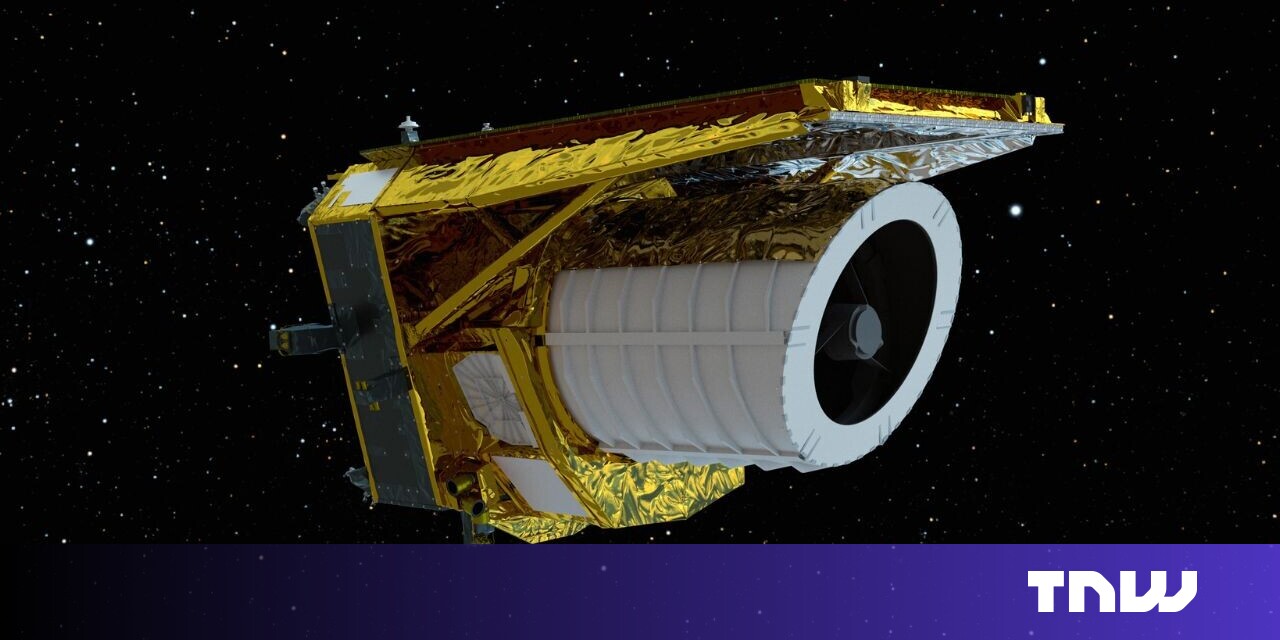
A spacecraft that’s exploring the dark universe has released its first full-colour images of the cosmos.
Named Euclid after the ancient Greek “father of geometry,” the satellite was developed by the European Space Agency (ESA). Its mission: produce the world’s largest, most accurate 3D map of the universe — with time as the third dimension.
Over a six-year journey that launched in July, the €1bn probe will monitor more than a third of the sky and billions of galaxies.
The observations will explore the influence of dark matter and dark energy on the formation of the universe. Together, these entities comprise 95% of our cosmos — but we still don’t understand exactly what they are.
To find out, Euclid will observe the shapes, distances, and motions of billions of galaxies that are up to 10 billion light-years away.
“Dark matter pulls galaxies together and causes them to spin more rapidly than visible matter alone can account for; dark energy is driving the accelerated expansion of the universe,” said Professor Carole Mundell, ESA’s director of science.
“Euclid will for the first-time allow cosmologists to study these competing dark mysteries together.”
On board the 4.7 metre satellite is one of the most precise telescopes ever sent to space. The telescope is equipped with two cameras: VIS, which captures the cosmos in visible light, and NISP, which measures the distances to galaxies and the expansion speed of the universe.
Today’s pictures are a showcase of their capabilities. According to ESA, a telescope has never previously produced this quality of astronomical images across such a large expanse of the sky, and so deep into the distant Universe.
In the coming months, Euclid’s scientists will analyse the snapshots for a series of scientific papers. But you can check the first five out right now.
1. The Perseus Cluster of galaxies


ESA describes this snapshot as “a revolution for astronomy.” It depicts 1,000 galaxies that belong to the Perseus Cluster, as well as more than 100,000 more distant galaxies in the background.
One of the largest known structures in the Universe, Perseus is located 240 million light-years from Earth. Some of the fainter galaxies are 10 billion years away. Many of them had never been seen before.
Without the presence of dark matter, Perseus could never have formed. “If no dark matter existed, galaxies would be distributed evenly throughout the Universe,” said Euclid Consortium scientist Jean-Charles Cuillandre.
2. The Horsehead Nebula


Around 1,375 light-years from Earth, the Horsehead Nebula is part of the Orion constellation. Named for its equine shape, the Horsehead is the closest star-forming region to us.
Euclid’s telescope has created a uniquely sharp and wide view of the Nebula. Captured within just one hour, the picture demonstrates Euclid’s ability to rapidly image a vast stretch of sky.
The data could also contain numerous previously unseen planets with the mass of Jupiter that are still in their celestial infancy, alongside baby stars and young brown dwarfs.
3. Spiral galaxy IC 342


IC 342 has the intriguing nickname of the “Hidden Galaxy.” It earned this sobriquet because it’s concealed behind layers of dust and gas from our Milky Way. Euclid’s near-infrared technology can peek through the haze.
IC 342 is also a Milky Way lookalike, which makes it highly valuable to astronomers.
“It is difficult to study our own galaxy as we are within it and can only see it edge-on,” said Euclid Consortium scientist Leslie Hunt. “So, by studying galaxies like IC 342, we can learn a lot about galaxies like our own.”
4. Globular cluster NGC 6397


NGC 6397 is one of around 150 known globular clusters in the Milky Way. These conglomerations of stars are among the oldest objects in the Universe.
The fainter stars in their centres offer priceless insights about the Milky Way’s history. However, they’re concealed by the light emanating from the brightest stars.
To peel back the curtain, Euclid observes an entire globular cluster while distinguishing its faint inhabitants. This helps determine the cluster’s age and chemical properties.
5. Irregular galaxy NGC 6822


NGC 6822 is the first irregular dwarf galaxy that Euclid observed. It’s around 1.6 billion light-years from Earth, which is actually quite nearby in astronomical terms.
Many globular star clusters have been found within this image. Irregular galaxies such as NGC 6822 don’t have a particular shape, but they do provide foundations for spiral galaxies, including the Milky Way.
“By studying low-metallicity galaxies like NGC 6822 in our own galactic neighbourhood, we can learn how galaxies evolved in the early universe,” Hunt said.


Euclid’s inaugural colour images provide a preview of what’s to come.
“We have never seen astronomical images like this before, containing so much detail,” said René Laureijs, an Euclid project scientist.
“They are even more beautiful and sharp than we could have hoped for, showing us many previously unseen features in well-known areas of the nearby Universe.
“Now we are ready to observe billions of galaxies, and study their evolution over cosmic time.”







